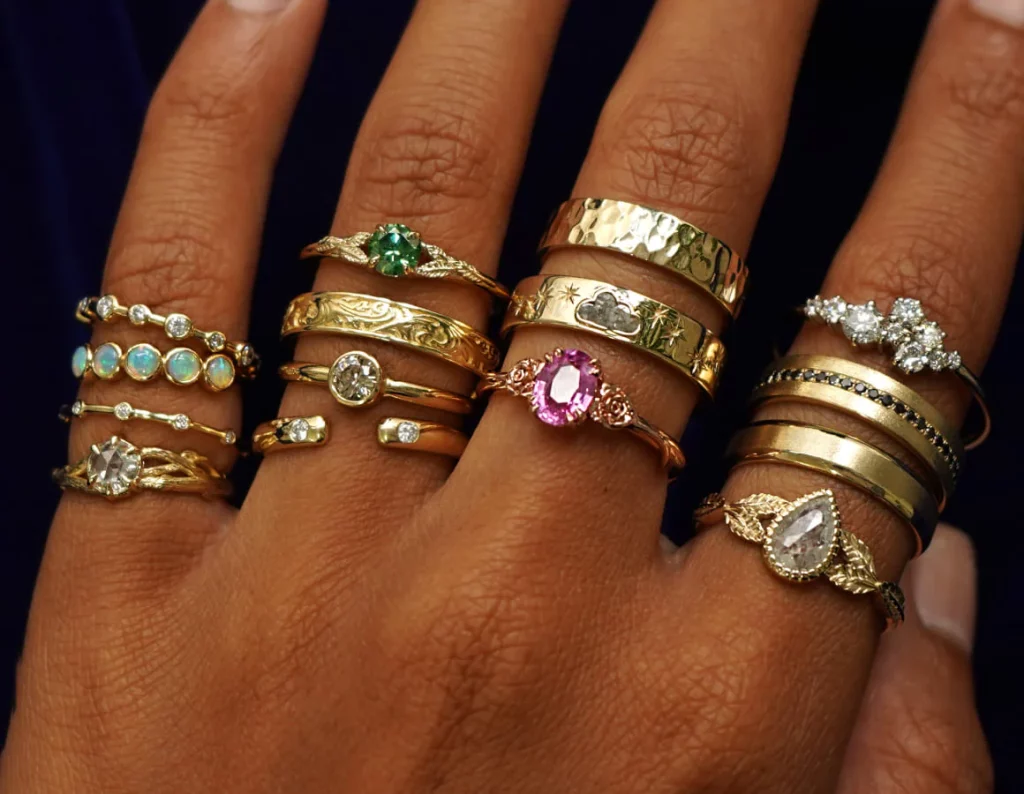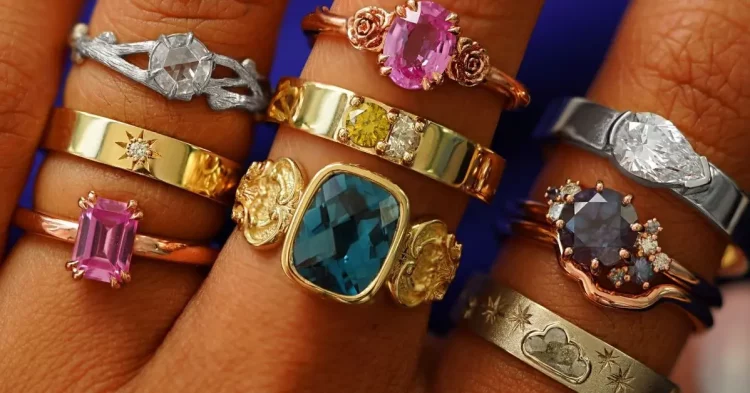The gold jewelry industry, long associated with luxury and tradition, is undergoing a profound transformation as sustainability takes center stage in 2025 and beyond. No longer is the glimmer of gold alone enough to capture consumer loyalty; today’s buyers are demanding transparency, ethical sourcing, and environmental responsibility. This shift is not just a fleeting trend—it is a fundamental redefinition of value within the jewelry market. In this article, we explore the current market trends in sustainable gold jewelry, examine how consumer demand is reshaping industry practices, and identify investment opportunities within the growing ethical gold sector.
Market Trends in Sustainable and Ethically Sourced Gold Jewelry
In 2025, sustainable gold jewelry is no longer a niche—it’s fast becoming the industry standard. Brands across the globe, from luxury powerhouses to independent artisans, are prioritizing ethical sourcing practices. Recycled gold has emerged as a leading material, allowing designers to create new masterpieces without the environmental destruction traditionally associated with mining. Notably, the use of post-consumer recycled gold is surging, reducing reliance on newly mined resources and lowering the overall carbon footprint of jewelry production.
Another major trend is the rise of traceability technology. Blockchain and digital tracking systems are enabling brands to offer consumers detailed information about the origin of their gold. Certifications from organizations such as the Responsible Jewellery Council (RJC) and Fairmined are gaining prominence, serving as trust signals to increasingly informed buyers. Brands that can transparently map their entire supply chain—from mine to market—are building significant competitive advantages.
Moreover, artisanal and small-scale mining (ASM) initiatives are receiving more support. Programs that empower small-scale miners, ensuring safe working conditions and fair wages, are now an integral part of many ethical sourcing strategies. Brands partnering with certified ASM programs are not only securing ethically sourced gold but are also contributing to positive socioeconomic development in mining communities.
Design trends are also reflecting these ethical priorities. Jewelry collections inspired by nature, crafted with minimal environmental impact, and highlighting the beauty of imperfection are resonating deeply with consumers. Pieces often emphasize organic forms, rough textures, and an artisanal aesthetic that speaks to authenticity and environmental consciousness.
How Consumer Demand is Shifting Toward Responsible Jewelry Brands
Today’s jewelry consumers, particularly Millennials and Gen Z, are fundamentally different from previous generations. They value transparency, sustainability, and social impact as much as design and luxury. According to industry reports, over 70% of younger consumers are willing to pay a premium for ethically sourced jewelry, and more than 80% actively research a brand’s environmental and labor practices before making a purchase.
The shift is evident in the marketing narratives brands are adopting. Storytelling around sustainability—highlighting the journey of the gold, the communities impacted, and the environmental benefits—is now as important as the design story. Brands that demonstrate genuine commitment to responsible practices, rather than engaging in superficial greenwashing, are gaining trust and loyalty.
Social media has amplified consumer expectations. Platforms like Instagram and TikTok are filled with influencers and activists promoting sustainable living, including ethical jewelry choices. Brands are being held accountable in real-time, and missteps in sourcing or transparency can lead to swift reputational damage. Conversely, companies that authentically engage with sustainability narratives are seeing viral success and long-term brand equity growth.
Another key driver is the rise of circular economy models. Consumers are embracing recycled and pre-owned gold jewelry, viewing vintage and refurbished pieces not as second-best but as chic, responsible choices. Brands that offer services like jewelry buy-back programs, recycling incentives, or resale platforms are tapping into a growing market segment that values sustainability over ownership.

Investment Opportunities in the Growing Ethical Gold Jewelry Market
For investors, the move toward sustainable gold jewelry presents compelling opportunities. Brands that lead in ethical practices are positioned for strong growth as consumer preferences continue to evolve. Investing in companies that have integrated sustainability at their core—not as a marketing afterthought—offers the potential for significant long-term returns.
One promising area is technology-driven traceability solutions. Companies developing blockchain platforms or digital certificates for ethical sourcing are critical enablers of industry transparency. Investing in these tech innovators supports the infrastructure necessary for sustainable jewelry to flourish.
There is also strong potential in ethical gold mining cooperatives. Organizations facilitating responsibly sourced artisanal gold are essential to scaling ethical supply. Investment in these initiatives not only contributes to social and environmental betterment but also taps into a steadily growing supply chain for sustainable jewelry brands.
Luxury brands with authentic sustainability credentials are another attractive investment category. Companies like Chopard, which have pioneered the use of 100% ethical gold, are setting industry benchmarks. Emerging brands that build ethical sourcing into their brand DNA from inception are likely to outperform legacy brands struggling to retrofit sustainability into old models.
Pre-owned and vintage jewelry marketplaces are rapidly expanding as consumers seek sustainable luxury. Platforms specializing in authenticated, recycled, or vintage gold pieces—such as The RealReal or Vestiaire Collective—are experiencing robust growth and represent fertile ground for investment, mergers, or partnerships.
Lastly, consumer education platforms focusing on ethical jewelry are gaining traction. Companies providing resources, certifications, and verification services for sustainable gold jewelry are becoming crucial players in the ecosystem, offering unique investment potential as intermediaries between brands and consumers.
Challenges and Considerations for Future Growth
Despite the many opportunities, challenges remain. Achieving full traceability across complex, globalized supply chains is difficult, particularly for smaller brands. Ensuring that ethical claims are verifiable and not perceived as greenwashing requires substantial investment in third-party certifications and audits.
Moreover, the cost of sourcing ethical gold remains higher than conventional methods, at least in the short term. Brands must balance these costs while maintaining competitive pricing, or effectively communicate the added value to justify premium pricing.
Finally, geopolitical instability in key mining regions and evolving regulations around sustainable practices could introduce volatility. Investors and brands must remain agile, closely monitoring political and environmental developments that could impact ethical gold supply chains.
Conclusion: A Golden Opportunity Rooted in Responsibility
The future of gold jewelry is undeniably sustainable. As consumer expectations continue to evolve, brands that align authenticity, environmental stewardship, and exceptional design will lead the market. For investors, the ethical gold sector offers a rare opportunity to participate in a market expansion driven not only by profit but by purpose.
Sustainability is no longer a luxury—it is the new standard of luxury. Those who adapt and innovate within this framework will not only capture market share but will also help shape a more responsible and brilliant future for the gold jewelry industry.



































